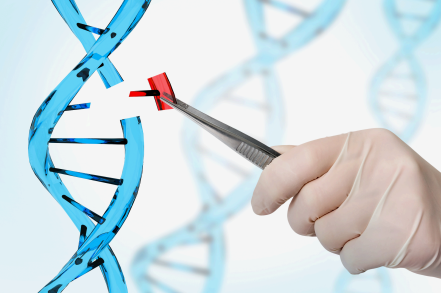An Overview of CRISPR
Humans have discovered a significant key to open a door that introduces sensational and notable improvements for the future. CRISPR, which stands for Clustered Regularly Interspaced Short Palindromic Repeats, is a revolutionary discovery that has benefited several fields including genetics, biology, treatments, etc. Identified in the DNA of bacteria and archaea, CRISPR serves as a natural defense mechanism to protect microorganisms from viral infections. However, when paired with a specific material called the Cas9 protein, it becomes a tremendous tool for editing genes with remarkable precision.
Mechanism of CRISPR
In a bacterium, if a virus invades, it uses CRISPR to preserve a portion of the virus’s DNA in its genetic code. When the virus attacks again, the bacterium makes a copy of RNA from the DNA archive. Then, the Cas9 protein compares every part of DNA the bacterium encounters to the sample from the archive to find traces of the viral invader. When there is a perfect match, Cas9 is activated and deletes the viral DNA, protecting the bacterium by making the virus DNA useless.
To utilize it as a gene editing tool in other organisms, scientists create a guide RNA that matches the DNA sequence they want to target, activating the Cas9 enzyme. The activated Cas9 cuts the DNA sequence at the target site. Afterward, the cell can repair the cut in two ways: either by Non-homologous end joining (NHEJ) or Homology-directed repair (HDR). While NHEJ causes a small mutation, disabling a specific gene, HDR is used to replace or correct genes. Through this process, modern humans have gained access to precise gene modification.
History of CRISPR
In fact, CRISPR is not a recent discovery. Researchers including Ishino first discovered CRISPR in bacterial DNA in 1987, but they did not understand what role it played. Around 2005, researchers revealed that CRISPR is an immune system for microbes to identify and remove invading viruses. From around 2005 to 2007, researchers identified the mechanisms behind cutting and defending certain DNA when CRISPR associates with Cas proteins (CRISPR-associated proteins), and this became the foundation of modern gene editing technologies. In 2012, researchers Charpentier and Doudna published their discovery of CRISPR-Cas9. CRISPR is accompanied by Cas9—one of several types of Cas proteins—to function like molecular scissors that chop up specific DNA.
Benefits of CRISPR
Prior to the advent of CRISPR, other gene editing methods existed. CRISPR’s efficiency and versatility, however, brought about a revolution in the field of gene editing. When it comes to cost and speed, CRISPR-Cas9 is more efficient than earlier gene editing techniques. The costs of engineering have shrunk by 99%. Additionally, CRISPR-Cas9 can provide results in a matter of days or weeks, whereas conventional methods take months or years. Furthermore, a wide range of organisms—including plants, animals, and humans—can use it.
Ethical Consideration
Even though it can be a significant key to bringing tremendous change to human life, it also raises critical ethical concerns. For example, China has attempted to alter the genomes of children, but several netizens criticized it as premature and unethical, while some argued that it could be beneficial for children in the future. The future of CRISPR lies not only in its scientific potential but in our ability to use it ethically and responsibly.
Works Cited
https://news.stanford.edu/stories/2024/06/stanford-explainer-crispr-gene-editing-and beyond#how-CRISPR
https://www.nature.com/articles/srep23549
https://www.newscientist.com/definition/what-is-crispr/
https://molecular-cancer.biomedcentral.com/articles/10.1186/s12943-022-01518-8
By. Minkyu Jung


